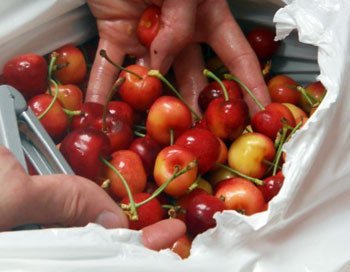Have you ever wondered when the perfect time is to sink your teeth into the juicy sweetness of Rainier cherries? Say goodbye to the guesswork because we have uncovered the secrets of their seasonality. From late spring to early summer, these vibrant golden cherries grace us with their presence, offering a delectable treat you won’t be able to resist. Get ready to indulge in the irresistible flavors as we take you on a journey through the seasonal wonder of Rainier cherries.
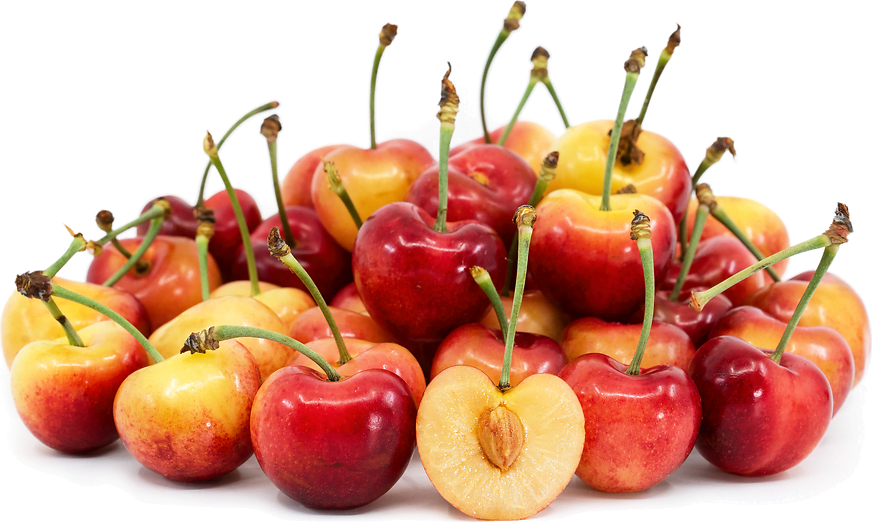
Seasonality of Rainier Cherries
Definition and Overview
Rainier cherries are a type of sweet cherry known for their yellow or blush-colored skin and juicy, flavorful flesh. They are named after Mount Rainier in Washington State, where they were first cultivated in the 1950s. The unique combination of sweetness and acidity in Rainier cherries makes them a popular choice among fruit enthusiasts. Understanding the seasonality of Rainier cherries is essential for both consumers and growers alike.
Importance of Understanding Seasonality
Knowing when Rainier cherries are in season is crucial for several reasons. For consumers, it ensures that they can enjoy the freshest and most flavorful cherries. Rainier cherries that are in season are generally more abundant and tend to have a better taste and texture. Additionally, understanding the seasonality allows consumers to plan their purchases and take advantage of the peak availability of Rainier cherries.
For growers, understanding the seasonality helps optimize harvest planning and resource allocation. It allows them to plan their planting and cultivation practices accordingly, ensuring that they can meet market demands. Understanding the seasonality also helps growers anticipate potential weather risks and adapt their farming practices accordingly.
Climatic Requirements for Rainier Cherry Trees
Ideal Growing Conditions
Rainier cherry trees thrive in regions with a temperate climate characterized by cool winters and warm summers. They require a significant amount of sunlight, usually around six hours of direct sunlight daily, to produce high-quality cherries. The trees also prefer well-draining soil that is rich in organic matter to support healthy root development and fruit production.
Temperature Range
Rainier cherry trees have specific temperature requirements throughout the year. In winter, they require a period of dormancy where they are exposed to temperatures between 32 and 45 degrees Fahrenheit (0-7 degrees Celsius). This dormancy period allows the trees to rest and prepare for the upcoming growing season. In contrast, during the growing season, Rainier cherry trees thrive in temperatures between 75 and 85 degrees Fahrenheit (24-29 degrees Celsius).
Chilling Hours
Cherry trees, including Rainier cherries, have a need for a specific number of chilling hours during winter to break dormancy and initiate fruit development. Chilling hours refer to the cumulative hours spent below a certain temperature threshold, usually between 32 and 45 degrees Fahrenheit (0-7 degrees Celsius). The exact chilling hour requirement for Rainier cherry trees varies depending on the specific cultivar, but it generally ranges from 500 to 1,000 chilling hours.
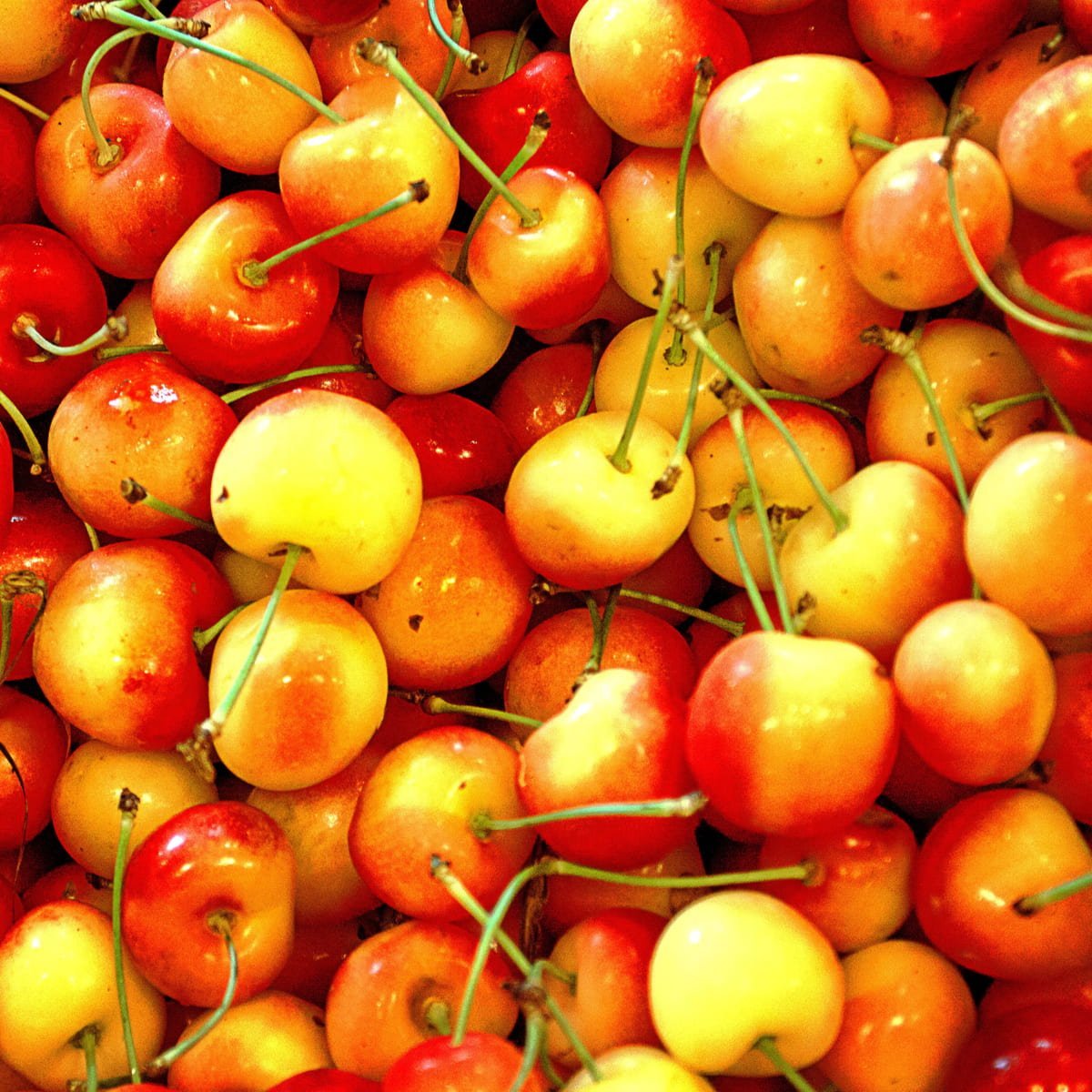
Blooming Stage
Timing of Blooms
The blooming stage of Rainier cherry trees usually occurs in early spring, typically around late March or early April, depending on the region and prevailing weather conditions. The exact timing can vary slightly from one year to another due to variations in weather patterns. It is crucial for growers to closely monitor the progression of the blooming stage to ensure proper pollination and fruit set.
Factors Affecting Blooming
Several factors can influence the timing and duration of the blooming stage in Rainier cherry trees. One of the most important factors is temperature. If spring temperatures are too cold or fluctuate significantly, it can delay or prolong the blooming period, increasing the risk of poor fruit set. Other factors, such as the tree’s age, health, and nutritional status, can also impact blooming.
Pollination and Fruit Set
Rainier cherries, like many other sweet cherry varieties, require cross-pollination with compatible cultivars for optimal fruit set. Bees and other pollinators play a crucial role in transferring pollen from the male flowers to the female flowers. Weather conditions during the blooming stage, such as rain or strong winds, can affect pollination by hindering the movement of pollinators. Proper pollination is essential for the development of healthy and abundant fruit.
Fruit Development and Maturation
Days to Harvest
After successful pollination and fruit set, Rainier cherries go through a period of fruit development before reaching maturity. The exact number of days to harvest can vary depending on various factors, including the specific cultivar, growing conditions, and weather patterns. On average, Rainier cherries take approximately 70 to 90 days from fruit set to reach proper maturity for harvest.
Ripeness Indicators
Determining when Rainier cherries are ready for harvest involves assessing their color, size, and firmness. As the cherries mature, their yellow or blush-colored skin develops a more vibrant and even hue. The cherries also increase in size and become plump and juicy. Gentle pressure should yield a slight give without being too mushy. Additionally, taste-testing a cherry can confirm its sweetness and flavor.
Harvest Window
The harvest window for Rainier cherries typically falls within a relatively short period, usually lasting a few weeks. It is crucial for growers to carefully monitor the cherry orchards to determine the optimal timing for harvest. Harvesting too early can result in underripe cherries with reduced flavor, while delaying the harvest can lead to increased susceptibility to pests, diseases, or fruit cracking.
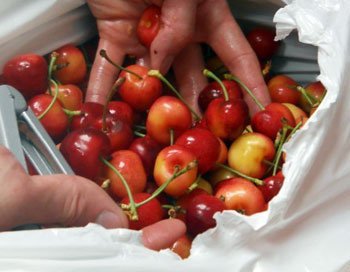
Regional Variations in Seasonality
North American Harvest Seasons
Rainier cherries are predominantly grown in the Pacific Northwest region of the United States, including Washington, Oregon, and California. The harvest season for Rainier cherries in these regions generally begins in early June and lasts until mid-July. However, due to variations in microclimates and growing practices, the exact timing can vary slightly within these regions.
International Harvest Seasons
Outside of North America, Rainier cherries are also cultivated in countries such as Australia, Chile, and New Zealand. The harvest seasons in these countries occur at different times of the year due to their unique climatic conditions. For example, Chile’s harvest season typically aligns with the North American offseason, providing a source of Rainier cherries from December to February.
Factors Influencing Variations
The variations in harvest seasons for Rainier cherries are influenced by a combination of factors. Climate and latitude play a significant role in determining when cherries can be grown and harvested. Different regions have distinct weather patterns and growing conditions that affect tree dormancy, blooming, and fruit development. Additionally, advancements in cultivation practices and the use of protective measures, such as greenhouses or tunnels, can further extend or modify the harvest seasons.
Commercial Harvesting and Distribution
Commercial Harvesting Practices
Commercial harvesters employ various methods to ensure efficient and high-quality harvest of Rainier cherries. Mechanical harvesters are sometimes used, but handpicking remains the preferred method for preserving the integrity of the delicate cherries. Skilled workers carefully select and gently handle the cherries to minimize damage.
Handling and Storage
After harvest, Rainier cherries undergo careful handling and storage to maintain their quality and extend their shelf life. Cherries are typically packed into shallow trays or baskets to prevent crushing and bruising. They are then stored in temperature-controlled facilities to slow down the ripening process and maintain freshness. Proper handling and storage are crucial to ensure that consumers receive cherries of the highest quality.
Market Availability
The availability of Rainier cherries in the market is influenced by both their seasonality and regional variations. During the peak season in North America, Rainier cherries are abundant and readily available in local grocery stores, farmers markets, and other retail outlets. Outside the peak season, imported cherries from countries in the Southern Hemisphere may provide consumers with an additional source of Rainier cherries.

Nutritional Profile and Health Benefits
Nutritional Composition
Rainier cherries are not only delicious but also packed with essential nutrients. They contain vitamins A and C, as well as minerals like potassium and calcium. They are also a good source of dietary fiber. Additionally, Rainier cherries are low in calories and fat, making them a healthy and guilt-free snack option.
Antioxidant Properties
Cherries, including Rainier cherries, possess powerful antioxidant properties due to their high content of antioxidants like anthocyanins. Antioxidants help protect the body against oxidative stress and reduce inflammation. Regular consumption of foods rich in antioxidants, such as Rainier cherries, is associated with numerous health benefits.
Health Benefits
Adding Rainier cherries to your diet can have several positive effects on your well-being. The antioxidants in Rainier cherries have been linked to improved heart health, reduced inflammation, and enhanced immune function. Additionally, cherries have been associated with better sleep quality and pain relief, making them a natural remedy for conditions like insomnia or arthritis.
Popular Culinary Uses
Fresh Consumption
The juicy and sweet nature of Rainier cherries makes them a delight to enjoy fresh. They are perfect for snacking or as a refreshing addition to salads, smoothies, or fruit bowls. Rainier cherries can also be used in various culinary creations, both sweet and savory.
Baking and Desserts
Rainier cherries shine in a variety of baked goods and desserts. From cherry pies and tarts to cobblers, crisps, and cheesecakes, their unique flavor adds a burst of sweetness to any treat. Their beautiful color and attractive appearance also make them an excellent choice for decorative purposes.
Culinary Pairings
Rainier cherries pair well with a wide range of ingredients and flavors. They complement creamy cheeses like brie or goat cheese, and their natural sweetness balances the tartness of citrus fruits. Rainier cherries also pair harmoniously with almonds, vanilla, and dark chocolate, providing a delicious contrast of flavors.
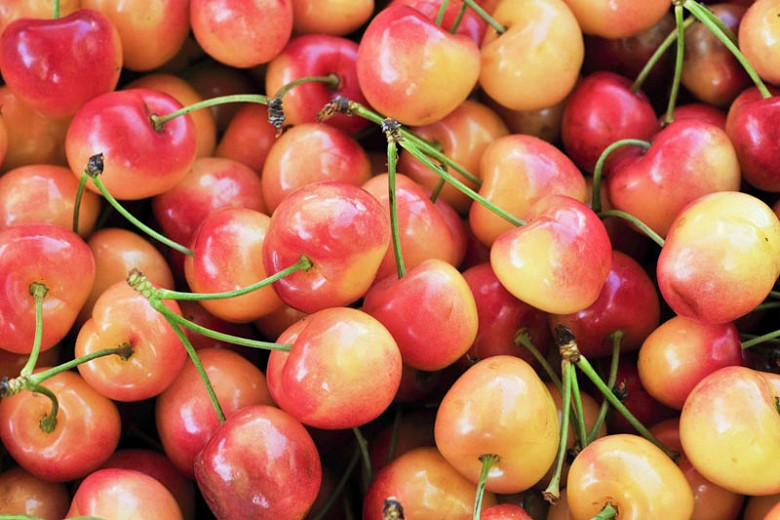
Annual Festivals and Celebrations
Rainier Cherry Festivals
Rainier cherries are celebrated in various festivals and events held in regions where they are abundantly grown. These festivals showcase the beauty and flavors of Rainier cherries through activities like cherry-picking, tasting tours, cooking demonstrations, and live entertainment. They provide communities with a platform to promote local agricultural products and celebrate the bountiful harvest.
Cherry Blossom Festivals
While not directly related to Rainier cherries, cherry blossom festivals are popular events celebrated worldwide to admire the beauty of cherry blossom trees in spring. These festivals often feature cultural performances, food stalls, and other activities, offering a unique opportunity to appreciate the beauty of cherry trees in bloom.
Community Events
In addition to dedicated cherry festivals, many local communities organize smaller-scale events to celebrate the harvest season and promote Rainier cherries. These community events often include farmers markets, farm tours, and educational activities to raise awareness about the importance of supporting local agriculture and enjoying seasonal produce.
Future Trends and Research
Extending the Harvest Season
Efforts are underway to extend the harvest season of Rainier cherries through research and technological advancements. Researchers are exploring methods to modify tree dormancy and flowering patterns, allowing growers to cultivate Rainier cherries in locations and seasons previously not feasible.
Breeding and Varietal Development
Breeders and scientists continue to work on developing new varieties of Rainier cherries with improved characteristics, such as disease resistance, higher yields, and enhanced flavor. The development of new cultivars can contribute to a more diverse selection of Rainier cherries and ensure their long-term sustainability.
Climate Change Implications
Climate change poses challenges to Rainier cherry production, as it can disrupt the delicate balance of temperature and moisture that the trees require. Research and adaptation strategies are necessary to understand and mitigate the potential impact of climate change on Rainier cherry cultivation, ensuring their continued availability and viability in the future.
In conclusion, understanding the seasonality of Rainier cherries is crucial for both consumers and growers. From their ideal growing conditions to the stages of blooming, fruit development, and maturation, each phase contributes to the overall quality of Rainier cherries. Regional variations in harvest seasons, commercial practices, and the health benefits and culinary uses of Rainier cherries all shape the experience of enjoying these delicious fruits. As we look to the future, ongoing research and technological advancements will further enhance our understanding and cultivation of Rainier cherries, ensuring their availability for generations to come. So, the next time you bite into a succulent Rainier cherry, savor the taste and appreciate nature’s gift.
